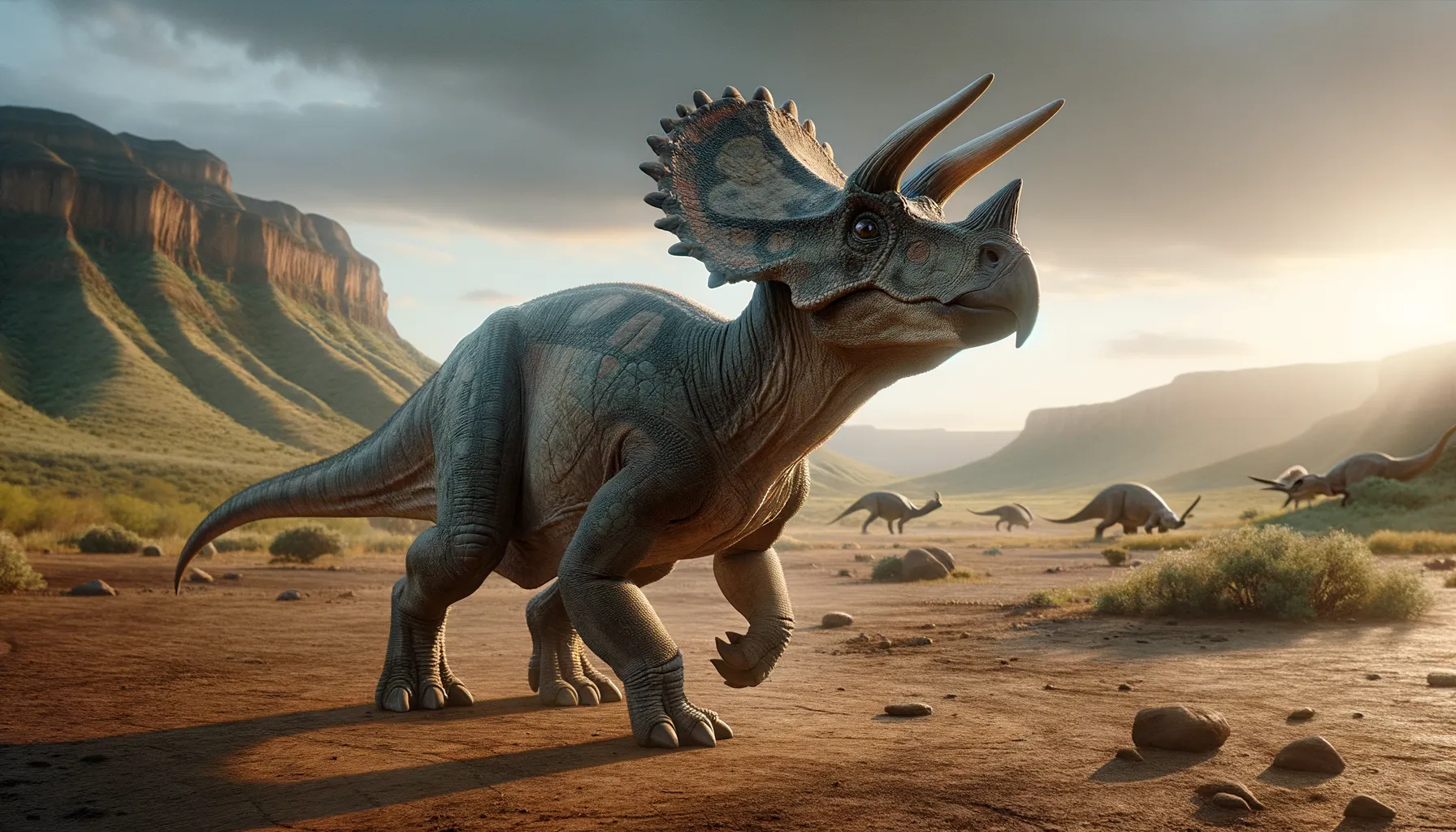
Archaeoceratops
Early horned pioneer of the dinosaur realm!
Period
Cretaceous
Length
About 1.2 meters (4 feet) long.
Height
Approximately 1 meter (3.3 feet) tall.
Weight
Around 50 kilograms (110 pounds).
Archaeoceratops was a small, herbivorous dinosaur that lived during the Early Cretaceous period. It is known for its primitive features that hint at the evolution of later ceratopsians. With a beak-like mouth, it likely fed on low-growing vegetation. Fossils of Archaeoceratops have been discovered in China, where it roamed semi-arid environments. Despite its modest size, it holds an important place in the dinosaur family tree as a precursor to larger horned dinosaurs.
Diet
Archaeoceratops was a herbivore that primarily fed on low-lying plants and shrubs. Its beak-like mouth would have been well-suited to nibbling on leaves and small vegetation.
Hunting
Being a herbivore, Archaeoceratops did not engage in hunting behaviors. Instead, it likely foraged for plants and used its small stature to navigate dense foliage for food.
Environmental challenges
Archaeoceratops lived in environments that were likely to be semi-arid with seasonal rainfall. The competition for limited vegetation during dry periods might have been a significant challenge. Climate fluctuations would also have influenced plant growth cycles. Predators in the area posed another threat, requiring constant vigilance and adaptations for survival, like quick escape or camouflage.
Speed
Moderate, similar to a fast walking human.
Lifespan
Estimated to be around 10 to 20 years.
First discovery
Found in the Gansu province of China in 1992.
Fun Facts
- Archaeoceratops was a small plant-eating dinosaur that lived about 125 million years ago during the Early Cretaceous period.
- Despite its name meaning 'ancient horned face,' Archaeoceratops actually didn't have much of a horn compared to its later relatives.
- This dinosaur was discovered in the Gobi Desert of China, which is famous for its wealth of dinosaur fossils.
- Archaeoceratops belonged to a group called 'ceratopsians,' which also includes the well-known Triceratops.
- Unlike its big relatives, Archaeoceratops was only about 3.3 feet long, roughly the size of a medium-sized dog.
- It had a beak-like mouth that was perfect for snipping plants, its primary diet.
- Archaeoceratops walked on two legs but might have occasionally used all fours when feeding.
Growth and Development
Juvenile Archaeoceratops would have been vulnerable to predators, growing rapidly to improve chances of survival. This species likely reached maturity faster than larger dinosaurs. Growth patterns in fossil specimens suggest a steady development, with physical adaptations appearing over time. Early developments in the beak and frill structures might have been beneficial for feeding and protection.
Habitat
Archaeoceratops inhabited regions that were likely filled with shrubs and low-growing plants. It lived in what is now central Asia, predominantly in the areas that are classified as semi-arid. The varying landscape included open spaces and wooded patches, offering both food sources and camouflage. This environment provided suitable conditions for foraging and quick escape routes from predators.
Interaction with other species
Archaeoceratops might have lived in small groups, using numbers for protection against predators. It would have shared its habitat with other plant-eating and potentially carnivorous dinosaurs. Interaction with predators would have involved defensive maneuvers or fleeing tactics. Social dynamics within groups could have included cooperation in foraging and juvenile care.
Natural lifespan
The natural lifespan was approximately 10 to 20 years.
Reproduction
Like other dinosaurs, Archaeoceratops reproduced through laying eggs. Nests would likely have been hidden among vegetation to protect from predators. Parental care could have included guarding the eggs until they hatched. The young might have stayed with the adults for a time after birth for added protection.
Social behaviour
Archaeoceratops may have lived in small herds or family groups. Social structures likely included cooperative behaviors for resource gathering and protection. Communication could have been through vocalization or visual signals, particularly during encounters with threats. Such social behavior might have played a role in the survival of juveniles.
Fossil locations
Fossils of Archaeoceratops have primarily been found in the Gansu Province of China. These findings have provided valuable insights into the diversity of early ceratopsians. The well-preserved remains have contributed to studies on the evolutionary pathways of later and more complex horned dinosaurs. Ongoing excavations may reveal additional fossil sites in neighboring regions.
